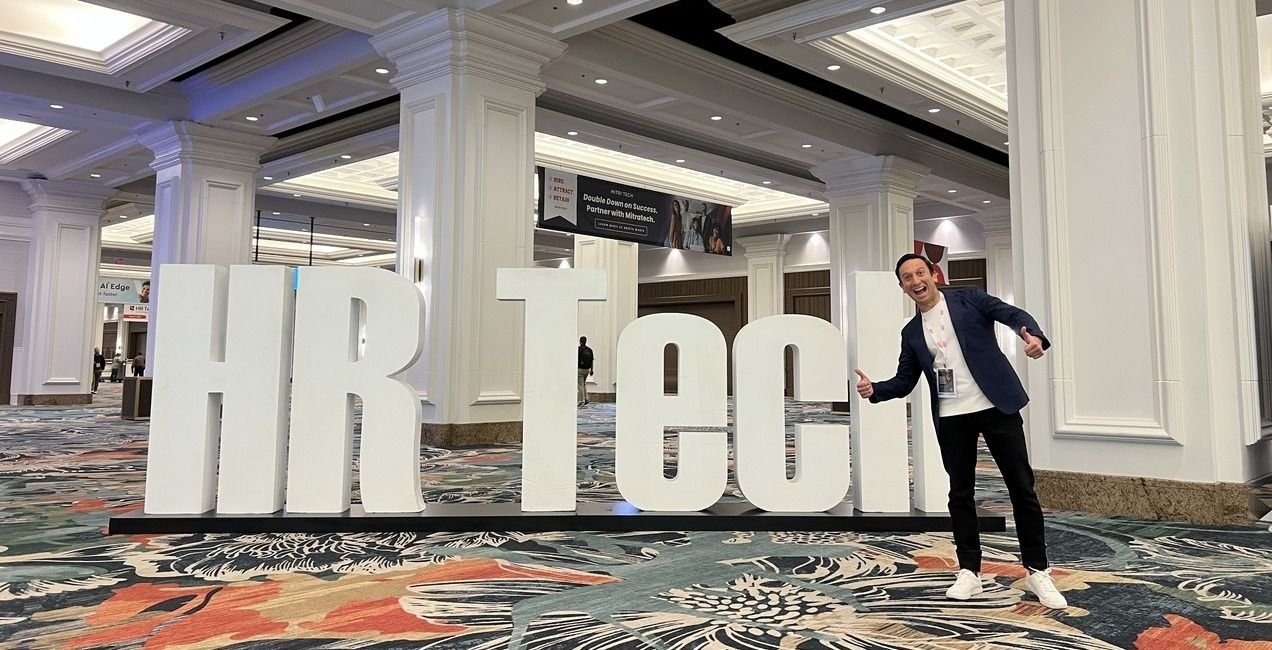In the short span of thirteen days, I had the incredible opportunity to attend two of the biggest recruiting conferences in the world: RecFest and HR Tech. Despite the current hiring slowdown, the energy was palpable in both Tennessee and Nevada. The influx of new technology and innovative ideas in the talent acquisition space was truly inspiring. So much so that keeping up with all the advancements feels like it could be a full-time job!

The Disappearing Role of the Sourcer
The most unexpected experience occurred during a talk at RecFest. There, I was joined by dozens of other leaders in recruiting listening to three industry luminaries: Gerry Crispin, Carmen Hudson, and Glen Cathey. Their discussion left the entire room intrigued and momentarily speechless—you know it's no small feat to quiet a gathering of recruiters.
The talk began with a bold assertion: the role of a sourcer will disappear within the next two years. Consider that over 100 years of industry experience were represented on that stage, and their collective prediction was that an entire role might soon evolve or even cease to exist. When the speakers asked the audience if they agreed, the majority nodded in affirmation. As someone who has been working in sourcing automation for years and knows the speakers' backgrounds, this was both a surprising and fascinating moment.

At Fetcher, we've long advocated for automating the sourcing process as much as possible. Yet, we've noticed that only about 20% of our users fully automate their sourcing—that is, they allow our system to reach out to candidates without manually vetting each one. Even when presented with high-quality candidates—where 80%, 90%, or even 100% are deemed suitable—recruiters often hesitate to relinquish control over the initial outreach. This hesitation led me to consider: What if separating the recruiter from the initial contact could be a key step toward more effective automation?
Disassociating the Recruiter from Outreach
From our experiments, we observed that when recruiters are not the ones directly sending emails to candidates, they become more comfortable with automation. Even if the system occasionally reaches out to someone they might not have personally selected, the benefits can outweigh the concerns.
This observation suggests that one possible approach to enhancing automation is to use virtual or synthetic personas to handle initial candidate outreach. By doing so, recruiters can focus on what they do best—building relationships and evaluating interested candidates—without getting bogged down in the time-consuming task of manual sourcing.
The Challenges of Over-Vetting
When recruiters are responsible for every email, they naturally become cautious, meticulously vetting each candidate to ensure they meet every job requirement listed. While this thoroughness is understandable, it presents a few issues:
Time Consumption: Investing substantial time in vetting each candidate isn’t efficient, especially when, on average, 75% of candidates won’t respond to outreach efforts. This means a lot of time is spent on candidates who may never engage.
Incomplete Online Profiles: Many candidates don’t list all their skills and experiences on platforms like LinkedIn. In fact, some of the best candidates intentionally keep their profiles sparse to avoid being inundated with messages. By relying solely on online information, recruiters may inadvertently overlook top talent.
Potential Bias: Over-vetting can unintentionally introduce bias, as recruiters might make assumptions based on limited information, potentially excluding qualified candidates.
A New Approach to Candidate Engagement
How automated outreach will be structured isn't entirely clear; however, it's evident that there is growing openness to supporting it moving forward. Options being considered include:
- AI reaching out from a recruiters inbox
- AI agent represented as human
- AI agent that is represented as AI
Recruiters could allow a virtual agent/assistant or "synthetic" persona handle the initial outreach. This removes the psychological barrier for recruiters who worry about personally contacting less-than-perfect matches. When a candidate expresses interest, recruiters can then step in to ask targeted questions, gather additional information, and determine if the candidate is a good fit.
This approach not only saves time but also expands the talent pool by including candidates who might have been previously overlooked due to incomplete online profiles.
The Road Ahead: Embracing Automation
While AI appears to be a significant aspect of the future of sourcing, it requires a shift in mindset. Recruiters may need to be open to new methods of candidate engagement that prioritize efficiency without sacrificing quality.
At Fetcher, we're interested in supporting this transition. While it may seem counterintuitive—especially since many sourcing tools are designed for recruiters to send emails themselves—we believe that considering alternatives to traditional outreach methods could be key to enhancing your workflow.
We're observing similar trends across the industry. Products like Paradox, which operates in the high-volume worker space, use recruiter bots to manage conversations and even make hiring decisions. While this level of automation might not be immediately applicable to all sectors, it's an indicator of where the industry could be heading.
Similarly, platforms like Karat have normalized video interviews for engineers—a practice that was less common not long ago. These examples show that both companies and candidates are becoming more comfortable with more "synthetic" interactions.
Balancing AI and Automation with Candidate Experience
Understandably, there’s concern that removing the human element from initial outreach could negatively impact the candidate experience. However, large language models (LLMs) and AI have advanced to the point where they can handle predictable conversations with thoughtful and personalized responses.
Our data suggests that clients who embrace more automation in their sourcing process can reduce their time-to-hire by up to 40%. This not only benefits recruiters but also provides a better experience for candidates, who receive timely updates and move through the hiring process more quickly.
The biggest hurdle to automating sourcing isn’t the technology—it’s the psychological barrier of changing traditional practices. As companies and recruiters explore new methods of outreach, we may see significant shifts in how sourcing is conducted.
Do you see the potential benefits outweighing the concerns? How might this change impact your recruiting strategies?




